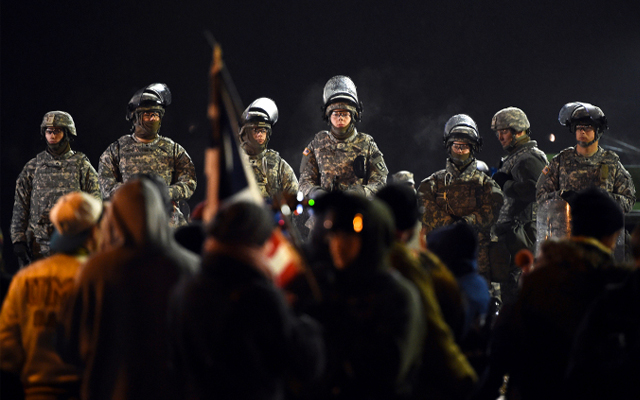On a recent Monday afternoon, President Obama announced, as part of his response to the clashes between protesters and police that have occurred in Ferguson, Missouri, since the fatal shooting of Michael Brown by Officer Darren Wilson nearly four months ago, that he would be imposing stricter standards on the distribution and use of U.S. military equipment by local police forces. Current regulations, Obama said, were inconsistent and, often, inconsistently enforced.
The announcement came after the White House released a report reviewing the use of military equipment provided through federal programs, commissioned just after the Ferguson shooting in August. Over the past few decades, the report said, such programs had expanded significantly—in the five-year period between 2009 and 2014 alone, the federal government provided some eighteen billion dollars for them—but training on the safe and proper use of military-style equipment had not been instituted apace. And so, basic personal-protective gear, high-powered weaponry, and vehicles—categories encompassing everything from night-vision devices, body armor, and full SWATgear to Tasers, small arms, sniper rifles, and Humvees—were often requisitioned without the necessary guidance on how to properly deploy them. “When police lack adequate training, make poor operational choices, or improperly use equipment,” the report stated, “these programs can facilitate excessive uses of force and serve as a highly visible barrier between police and the communities they secure.” Or, as Senator Claire McCaskill put it back in September, “Officers dressed in military fatigues will not be viewed as partners in any community.”
To address the problem, the report—and President Obama—suggested a multi-pronged approach: more standardized federal oversight of how the equipment is deployed; and expanded training, to say precisely when and how military equipment should be used (the latter would also include the addition of fifty thousand body cameras). But will more considered use of military-style gear help to prevent violence in Ferguson-like situations in the future?
Tempering the conditions under which police can use military-style gear makes a certain amount of sense: uniforms really do set people apart, and the specific nature of a uniform can send strong social signals. They allow us to tell, at a glance, who someone is and what she is apt to be like. A white coat and stethoscope, or a set of blue scrubs, for example, tells you that you can ask for medical help and expect to receive care. And a navy blue shirt tucked into navy pants, with cap and badge to match, indicates that someone responsible for enforcing the law—in a very particular way—is in the area.













